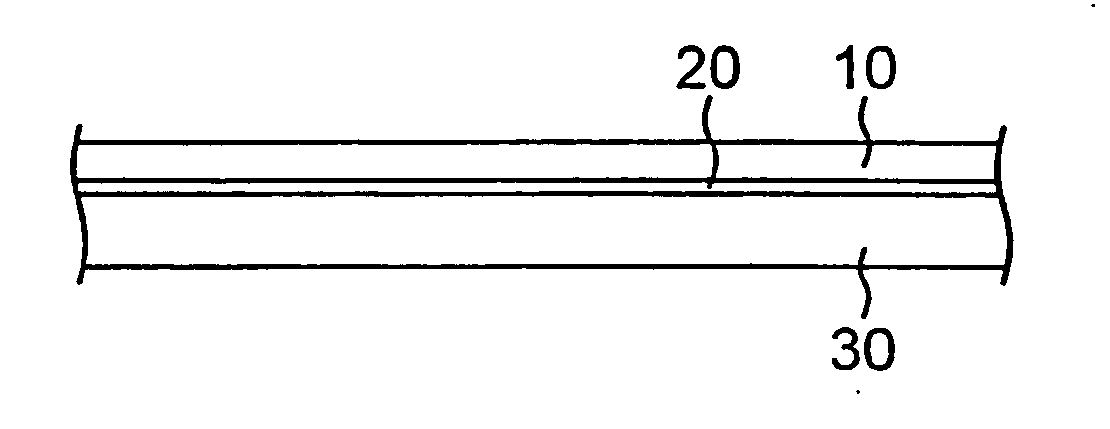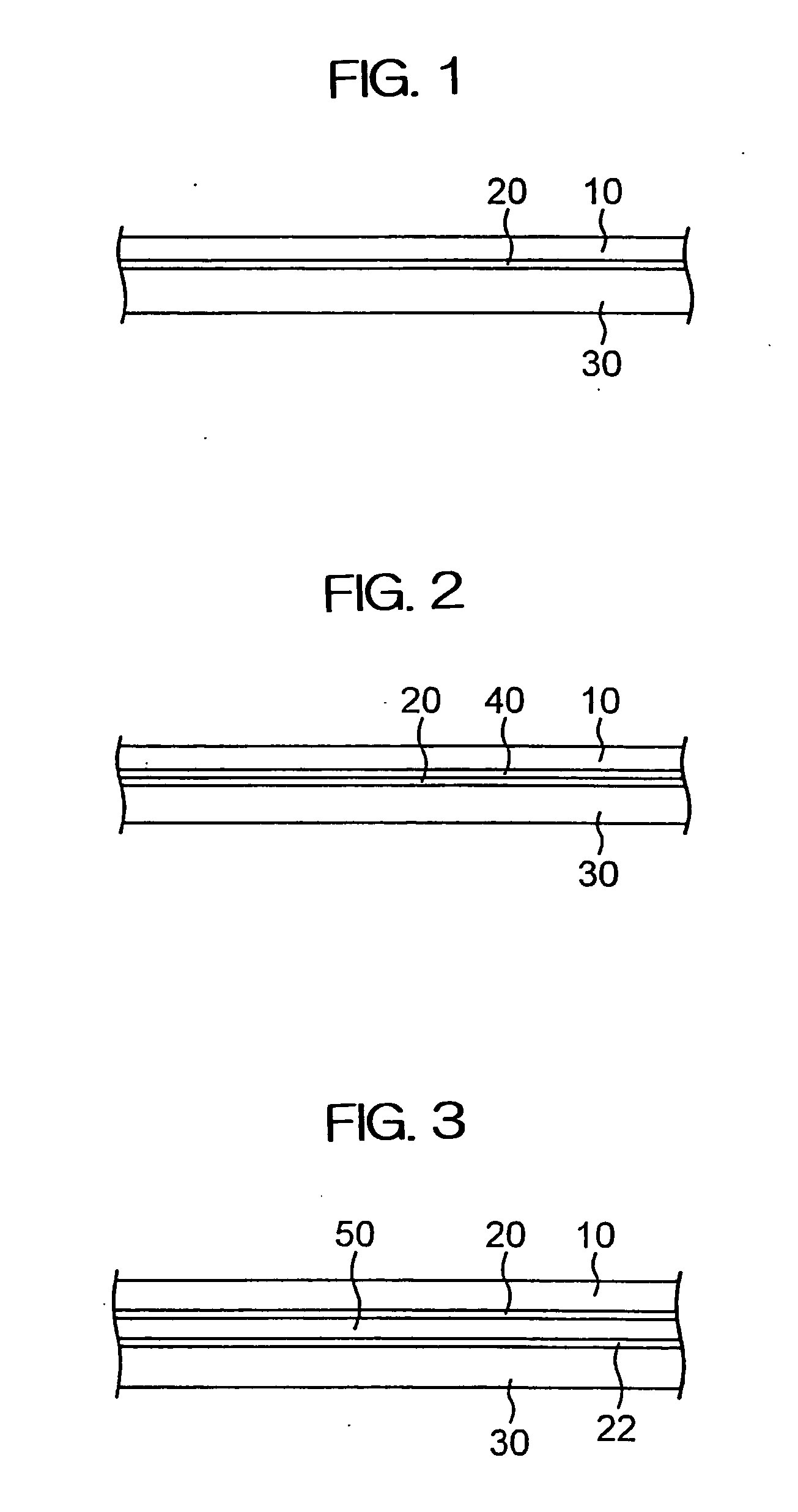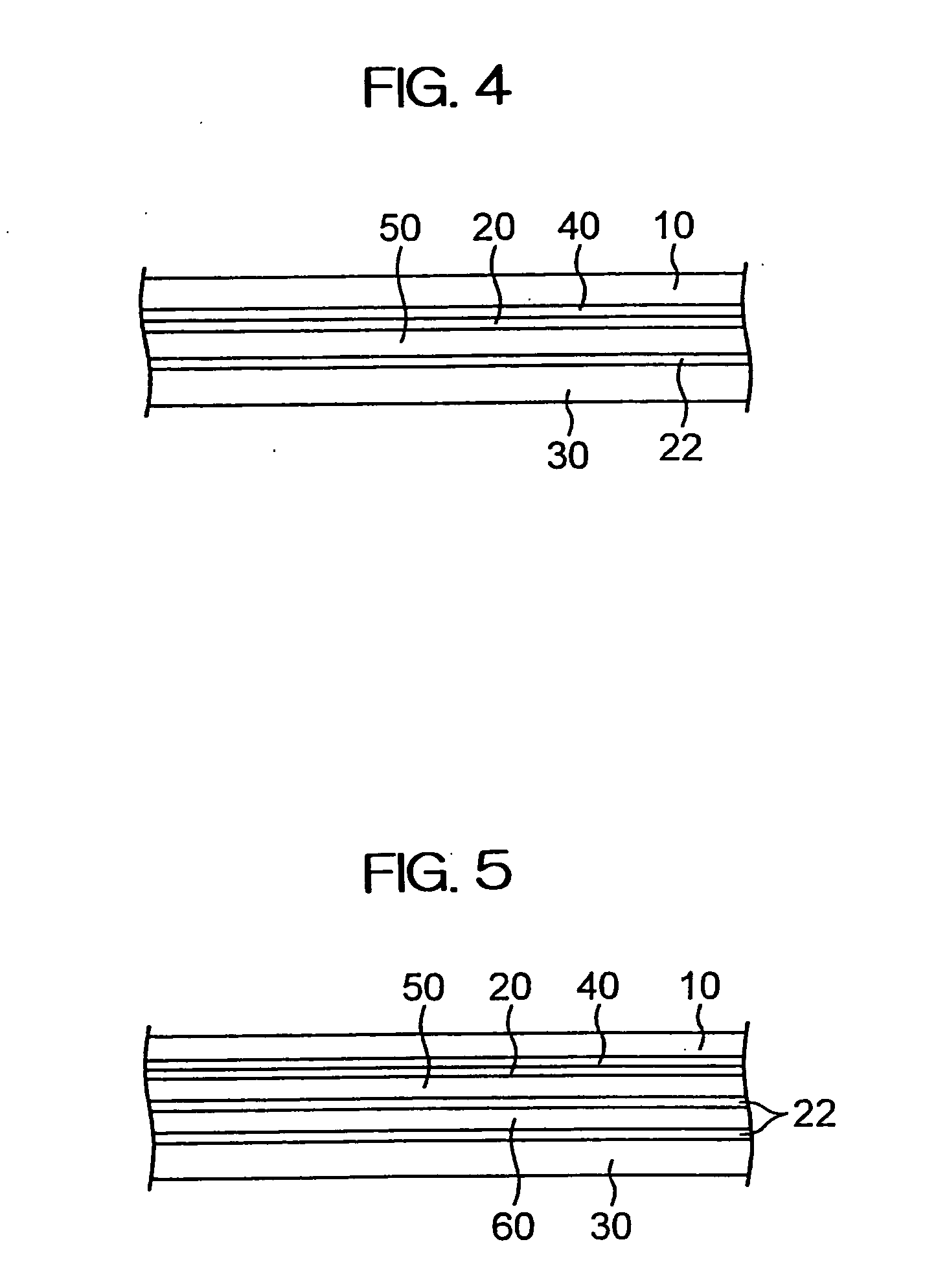Packaging material
a technology of packaging material and opacifying properties, applied in the field of packaging material, can solve the problems of insufficient shading properties and opacifying properties of packaging material, inability to obtain sufficient shading properties, complex production steps, etc., and achieves the effects of low cost, sufficient shading properties, and relatively simple production steps
- Summary
- Abstract
- Description
- Claims
- Application Information
AI Technical Summary
Benefits of technology
Problems solved by technology
Method used
Image
Examples
examples
[0057] Next, the packaging material of the present invention will be described in more detail with reference to examples. However, the present invention should not be limited to the examples illustrated below.
examples 1 to 20
[0058] One surface of a 12 μm-thick polyethylene terephthalate film as a substrate was printed with white ink (New LP Super, manufactured by Toyo Ink Mfg. Co., Ltd.) once to four times as shown in Tables 1 to 4 using gravure printing to form a white coating layer with the white ink applied in an amount of 4.2 g / m2, 9.0 g / m2, 13.2 g / m2, or 18.0 g / m2. Then, a 12 μm-thick transparent deposited polyethylene terephthalate film was laminated on the surface with the white coating layer of the biaxially oriented polyethylene terephthalate film, in which the white coating layer was formed, by dry lamination using an urethane adhesive (TM-265, manufactured by Toyo-Morton, Ltd.) containing a colorant having various compositions shown in Tables 1 to 4. Next, a 12 μm-thick biaxially oriented nylon film was laminated on the aluminum oxide-deposited polyethylene terephthalate film, and a 70 μm-thick cast polypropylene film was further laminated on the nylon film by dry lamination using the same ur...
reference examples 1 to 4
[0061] As a reference, one surface of a 12 μm-thick polyethylene terephthalate film, the same substrate as used in Examples 1 to 20, was printed with white ink once to four times in the same manner as in Examples 1 to 20 to form a white coating layer with the white ink applied in an amount of 4.2 g / m2, 9.0 g / m2, 13.2 g / m2, or 18.0 g / m2. The light transmittance, opacifying properties, laminate adhesion strength, and heat seal strength of the sample used as is were examined according to the following method and standards. The results obtained are shown in Tables 1 to 4.
PUM
| Property | Measurement | Unit |
|---|---|---|
| light transmittance | aaaaa | aaaaa |
| thickness | aaaaa | aaaaa |
| thickness | aaaaa | aaaaa |
Abstract
Description
Claims
Application Information
 Login to View More
Login to View More - R&D
- Intellectual Property
- Life Sciences
- Materials
- Tech Scout
- Unparalleled Data Quality
- Higher Quality Content
- 60% Fewer Hallucinations
Browse by: Latest US Patents, China's latest patents, Technical Efficacy Thesaurus, Application Domain, Technology Topic, Popular Technical Reports.
© 2025 PatSnap. All rights reserved.Legal|Privacy policy|Modern Slavery Act Transparency Statement|Sitemap|About US| Contact US: help@patsnap.com



